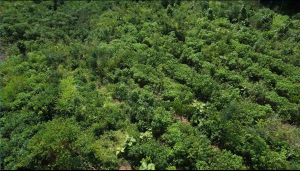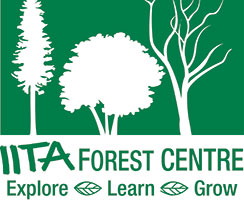
14 Sep Restoring Nigeria’s declining forest lands and tree diversity
Forests are a part of the most resourceful means of preserving the earth’s biological diversity, enhancing ecosystem stability and mitigating environmental degradation and climate change. However, forests are increasingly being degraded to make room for rising human population, urbanization, and increased food production. The impact of intensified use of land for these purposes takes its toll on forest lands and biodiversity worldwide.
Due to rising population, poor governance, unemployment and declining quality of livelihoods, villagers encroach into forest reserved areas to plant, log trees, and exploit forest resources to meet their daily needs. While the importance of farming to meet the billions of tons of food and dietary needs of the world’s growing population is paramount, effort must be expended to sustain earth’s natural resources while we source for food. It is foreseen that business-as-usual will not be able to sustainably feed the growing world population and meet global food demand without causing detrimental or even irreversible effects on the world’s natural resources (FAO, 2018).

Olokemeji Forest Reserve (OFR: 7°40ʹ N, 3°50ʹ; c.5888 ha, 115 m a.s.l.) situated in the lowland rainforest stretch of south-western Nigeria is owned and managed by the Ogun State Government of Nigeria. The government reserved the forest area mainly to generate income through timber concession and the harvesting of Non-Timber Forest Products. However, residents’ unsustainable exploitation of forest resources to meet their daily needs for food and income has led to the rapid degradation of the forest reserve. A PhD study conducted in and around the OFR in 1999-2002 reported that the original vegetation of the area had disappeared and replaced by non-native tree species, including Teak Tectona grandis and Melina Gmelina arborea. This exerts negative impacts on native biodiversity in the area.
The Olokemeji Reforestation Project being implemented through community engagement and public-private partnership is restoring the encroached and highly degraded OFR. This is achieved by engendering an increasing participation and sense of ownership in community members through focused engagement programs. The programs are set to gain the inclusion and buy-in of community members, and open their minds to the direct and indirect gains of reforestation to host communities and the global community at large.
So far, the project has employed 18 members of the community to carry out and coordinate the reforestation activities, and participate in trainings designed to alleviate poverty in rural communities and their surrounding areas. Some of the recruited staff work to raise seedlings in the project nursery. In fact, a total of 78,193 seedlings of 64 different native tree species have so far been planted since the inception of project activities in March 2021, covering about 125 ha of the reforestation site. The planting is carried out by the 18 community members and invited guests who are supervised by the IITA Forest Center staff during scheduled regular and ceremonial tree planting events.
One of the marathon tree planting activities, termed plantathon, focused on engaging the Olokemeji community youths, market women, students, farmers, hunters, and village heads. This plantathon was so designed to foster the ownership and buy-in of the community members in the reforestation project. Once they are involved in tree planting, they would be more inclined to protect their investment. They subsequently become more informed about the positive contributions of the planting to their communities now and in the future.
Of the 64 species planted so far, 15 are of serious conservation concern based on the classification of the International Union for Conservation of Nature (IUCN). Two of the three most planted species are already Red-Listed by the IUCN, including African Mahogany Afzelia africana, Black afara Terminalia ivorensis, and African breadfruit Treculia africana. The project is not only restoring lost forest resources and enhancing rural livelihoods, it is also invariably conserving genetic resources of native tree species for future use in other reforestation projects.
Staff also estimate the significance of the reforestation project in improving biodiversity by focusing on birds. Regular bird surveys are conducted in the reforestation area to monitor population trends as trees grow. In a 4-day bird survey carried out in selected locations of the 618 ha reforestation site, 139 birds of 80 different species were recorded. The top 10 most encountered bird species were generalists, birds that could still be found in relatively disturbed habitats, conforming with the highly degraded state of the forest at the inception of project activities. These included Blue-spotted Wood Dove Turtur afer, Bronze Mannikin Spermestes cucullata, Grey-backed Camaroptera Camaroptera brachyuran, Common Bulbul Pycnonotus barbatus, Common Wattle-eye Platysteira cyanea, Blackcap Babbler Turdoides reinwardtii, among others.
The project is promoting the efficient use of forest lands to give room for both agricultural development and natural resource conservation. It is anticipated that the ongoing reforestation project will restore the lost local biodiversity of the area, and subsequent bird surveys should record more specialist forest birds. It is also anticipated that in the nearest future, more native trees, providing rich forest canopy that support diverse flora and fauna presence will be seen enriching the Olokemeji community and entire landmass.

